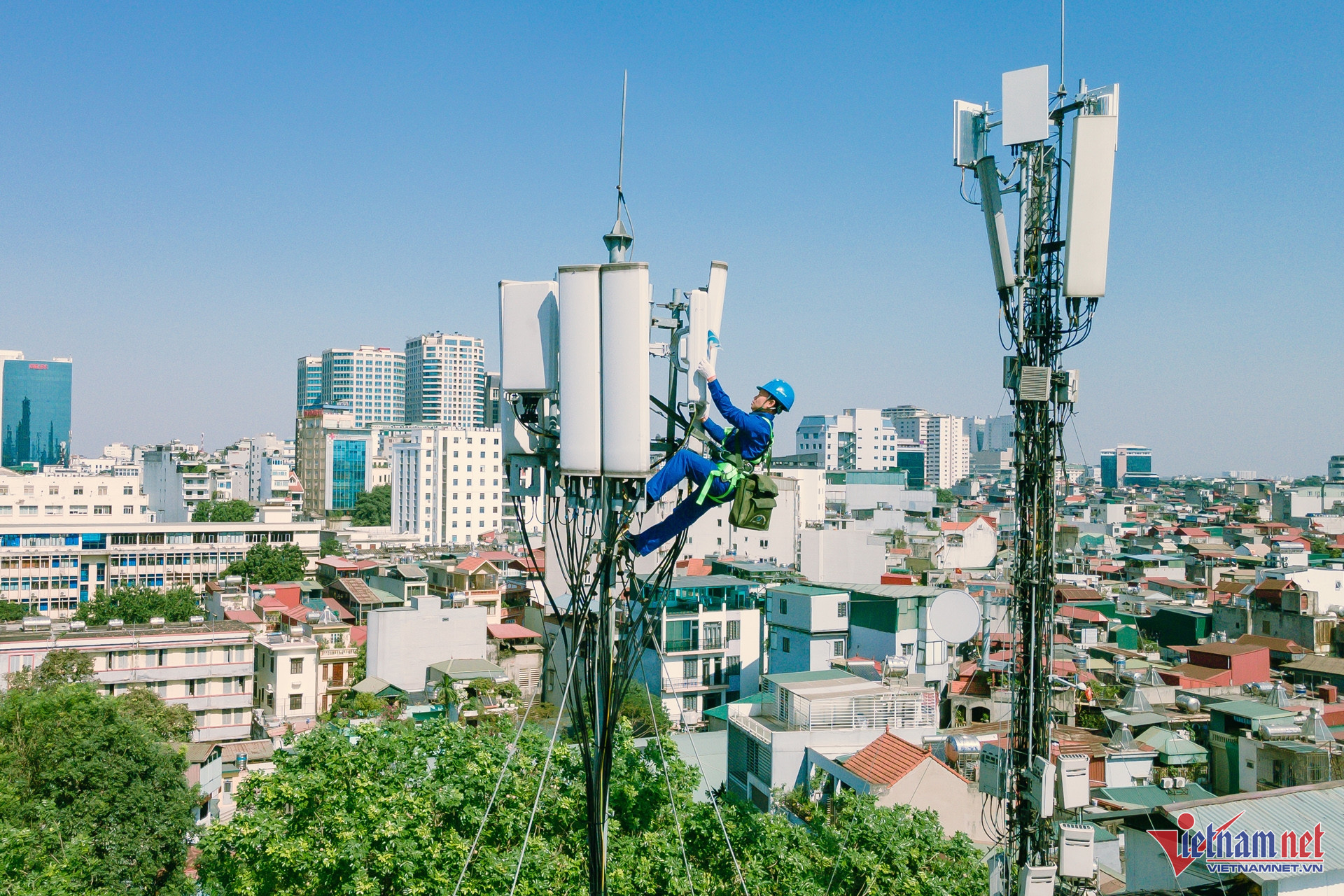A key direction of the Ministry of Science and Technology (MOST) in 2025 is to develop modern and synchronized digital infrastructure, with a focus on essential components such as widespread 5G networks, internationally standardized data centers, submarine fiber optic cables, and telecommunications satellites.
Strategic directions for 2025

Nguyen Thanh Phuc, Director of the National Digital Transformation Agency, discusses 2024 results and 2025 priorities.
Speaking at the launch ceremony of the Vietnam Digital Awards 2025, Nguyen Thanh Phuc, Director of the National Digital Transformation Agency (MOST), outlined the ministry’s major strategic directions for 2025 in line with the country’s national digital transformation process.
He stated that the ministry will concentrate on investing in foundational and future technologies that have the potential to create breakthroughs and national competitive advantages, particularly artificial intelligence (AI), semiconductors, smart manufacturing, and cybersecurity.
Vietnam will also complete an innovative, modern legal framework aligned with the digital economy and innovation trends. This includes removing institutional and policy barriers, establishing a transparent and open legal environment that encourages research, innovation, and technology application.
The development of modern digital infrastructure is also a priority, emphasizing key components such as widespread 5G coverage, international-standard data centers, cloud computing platforms, submarine fiber optic cables, and telecommunications satellites.
In addition, ministries, sectors, and localities will be pushed to move their operations online, manage and make decisions based on digital data, and improve the quality and rate of fully online public service records. National and specialized digital platforms, as well as shared databases, will be rapidly deployed.
MOST is also aiming to raise the digital economy’s contribution to GDP beyond 20% this year.
Another key focus is developing a high-quality workforce for science, technology, and digital transformation. Breakthrough policies will be introduced to attract and retain talent from both inside and outside the country, especially Vietnamese experts and scientists living abroad.
"Strong development of the national innovation ecosystem, with tight linkages between research institutes, universities, and businesses, is another major goal," Nguyen Thanh Phuc emphasized. He also encouraged enterprises to invest in R&D and 'Make in Vietnam' products.
A key driver of economic growth

Widespread 5G coverage is one of the key digital infrastructures prioritized this year.
Reflecting on Vietnam’s digital transformation progress, Nguyen Tuan Anh, Director of GeoAI Vietnam, said that post-COVID-19, people across the country have gained clear awareness of the practical benefits of digital transformation.
The widespread adoption of mobile phones has been a turning point, allowing people from all walks of life to access and master digital technology. Digital infrastructure has now reached even remote and rural areas, laying a solid foundation for widespread digital transformation.
“In the future, we hope the achievements of digital transformation will reach even deeper into poor and remote communities,” Nguyen Tuan Anh expressed.
At the national level, according to the National Digital Transformation Agency, Vietnam’s digital transformation has made significant strides in recent years. It has become a key driver of economic growth, social development, improved governance, and quality of life.
The 2024 national digital transformation report by the Ministry of Information and Communications (now MOST) highlighted several milestones.
In terms of digital government, Vietnam rose to 71st out of 193 countries in the UN’s 2024 E-Government Development Index, moving up 15 places from 2022 and achieving the “Very High” category for the first time.
On the legal front, the amended Telecommunications Law expanded development from telecom infrastructure to digital infrastructure. The Data Law provided a legal framework for the data market and tackled issues of data monopolization. In 2024, Decree 82 and Decree 138 were also issued to resolve key funding bottlenecks in digital transformation.
In terms of digital infrastructure, 2024 marked the first time in 15 years that Vietnam successfully auctioned frequency bands, adding 300 MHz to support 5G deployment. The sixth and largest-capacity submarine cable line was launched, significantly improving international connectivity speed and stability.
Regarding data and platforms, five of the ten national databases are now operating effectively. Data transaction volume through the national data integration and sharing platform (NDXP) in 2024 increased by 57% compared to the previous year. Population data has also been synchronized and cleansed across multiple sectors including social insurance, education, social support, and residency management.
In terms of online public services, the National Public Service Portal has integrated 4,475 administrative procedures, accounting for 70.8% of all procedures, with approximately 425,000 daily users via the VNeID platform.
The digital economy also saw impressive growth, contributing an estimated 18.3% of GDP in 2024, growing at over 20% annually - three times the rate of traditional GDP growth and the highest in the ASEAN region.
Van Anh